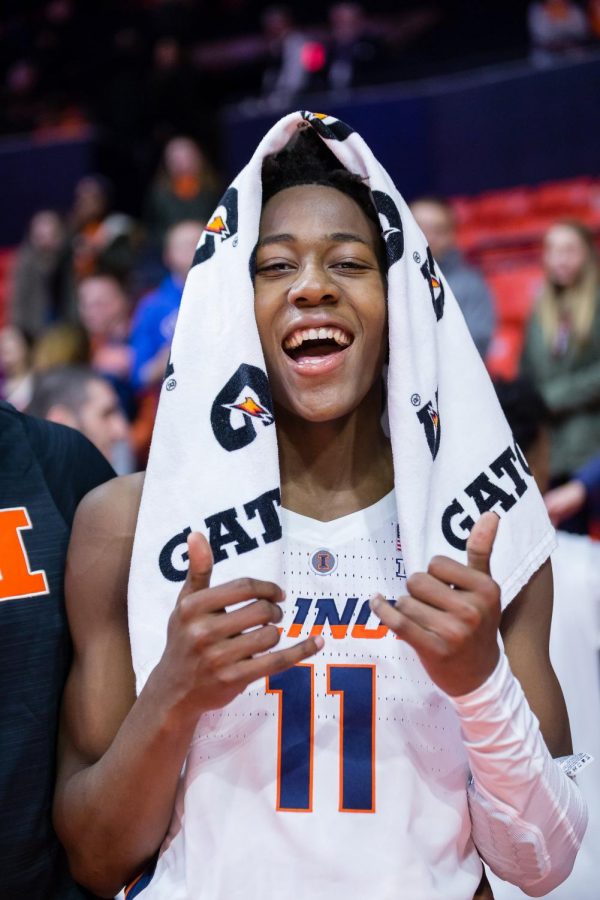Nature of game, players have changed over time
Freshman guard Ayo Dosunmu. Poses for a picture after Illinois’ win against Evansville on Nov. 8. Dosunmu, along with many other young players, are changing the nature of the collegiate-level game.
Feb 21, 2019
Jan. 17, 2000: It was on this day Illinois freshman guard Ayo Dosunmu was born, just over 19 years ago.
One day prior, “The Simpsons,” released an episode titled “Faith Off” in which Homer Simpson injures the star kicker on the Springfield University football team.
However, don’t count on the Illini’s freshman guard to know that, nor “The Simpsons” at all, as he admitted in an interview on Big Ten Network he has never seen the iconic animated comedy. When asked if he could recall Homer’s signature catchphrase, Dosunmu was lost for words.
“Nah, I’ve never watched that before,” Dosunmu said.
Given the show’s impact on American pop culture since its inception in 1989, it is quite remarkable to think Dosunmu has never seen it once. The moment not only brought the cultural knowledge of today’s college freshman into perspective, but it also reinforced how vastly different college basketball is nowadays, in terms of player experience, compared to the turn of the century.
Get The Daily Illini in your inbox!
In that season, Michigan State won the national championship with a lineup consisting of three seniors and two juniors, while freshman McDonald’s All-American Jason Richardson played as a reserve.
Compare that to this year –– in which none of the leading contenders for the national championship can match that level of experience and where programs like Duke and Kentucky have embraced recruiting players they know will leave after one season, even making it part of their brands.
Even top teams considered “old” by 2019 standards can’t quite match the 2000 Spartan’s experience, as Virginia starts both a freshman and a sophomore, while Tennessee has more juniors than seniors in its starting five.
Not only are college basketball’s elite programs far younger than they were 18 years ago, but players have less patience in terms of growing their games before turning pro.
In 2000, Kenyon Martin, a senior from the University of Cincinnati, went first overall and only five American players 19 or younger were drafted in the first round. Compare that to 2018, where a non-19-year-old was not selected until the Sixers took Mikal Bridges with the tenth pick and 17 players either 19 years old or with one year of college playing experience were drafted in the first round. Furthermore, a non-freshman has not been drafted first overall since Blake Griffin in 2009.
Looking ahead to this year’s draft, the trend slightly bucks, as more sophomores and juniors compared with recent drafts are projected to go in the first round at this point. However, at the top, three freshmen from Duke are expected to go within the first five picks and the other two players likely to go top-five, Texas Tech sophomore Jarrett Culver and Murray State sophomore Ja Morant, will both be just 20 years old in their rookie campaigns, the normal age a one-and-done player turns as a rookie.
While the youth movement in college basketball and the NBA draft pool is constantly increasing, likely to the point the one-and-done rule will be ended soon, keeping players and developing them for multiple years is still the formula to win national championships.
Since Duke’s national title win in 2015, just one true freshman has started on a national championship winning team, Villanova’s Jalen Brunson in 2016, and he did not turn pro after.
Later on in his interview, Dosunmu also could not name a single member of “NSYNC” or the “Backstreet Boys.” As it turns out, when comparing college basketball in 2019 to the days when those bands were at their peak, the number of underclassman saying “Bye Bye Bye” to the collegiate game is increasing each year.
@MilesP_H






